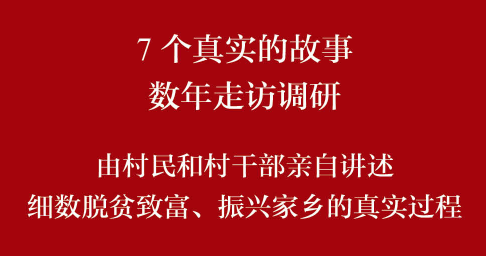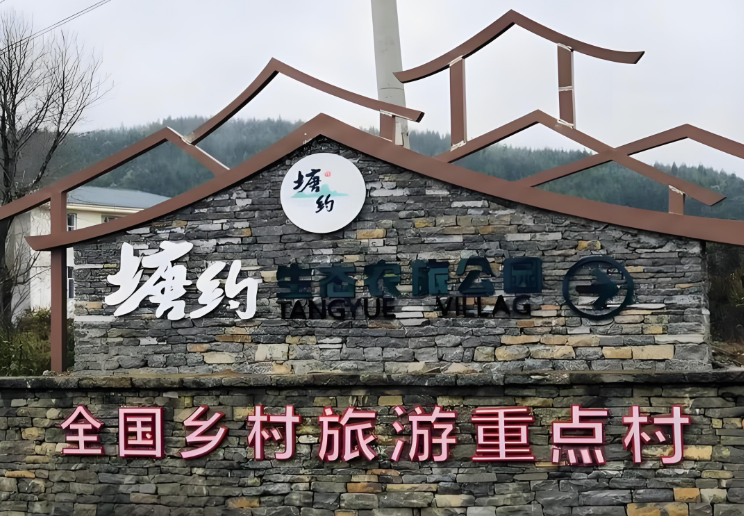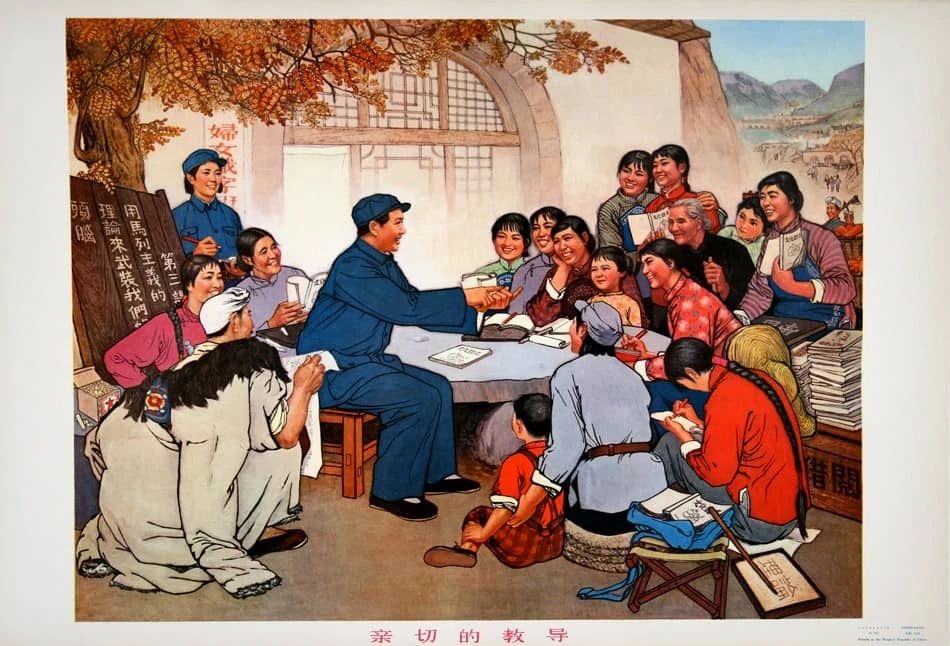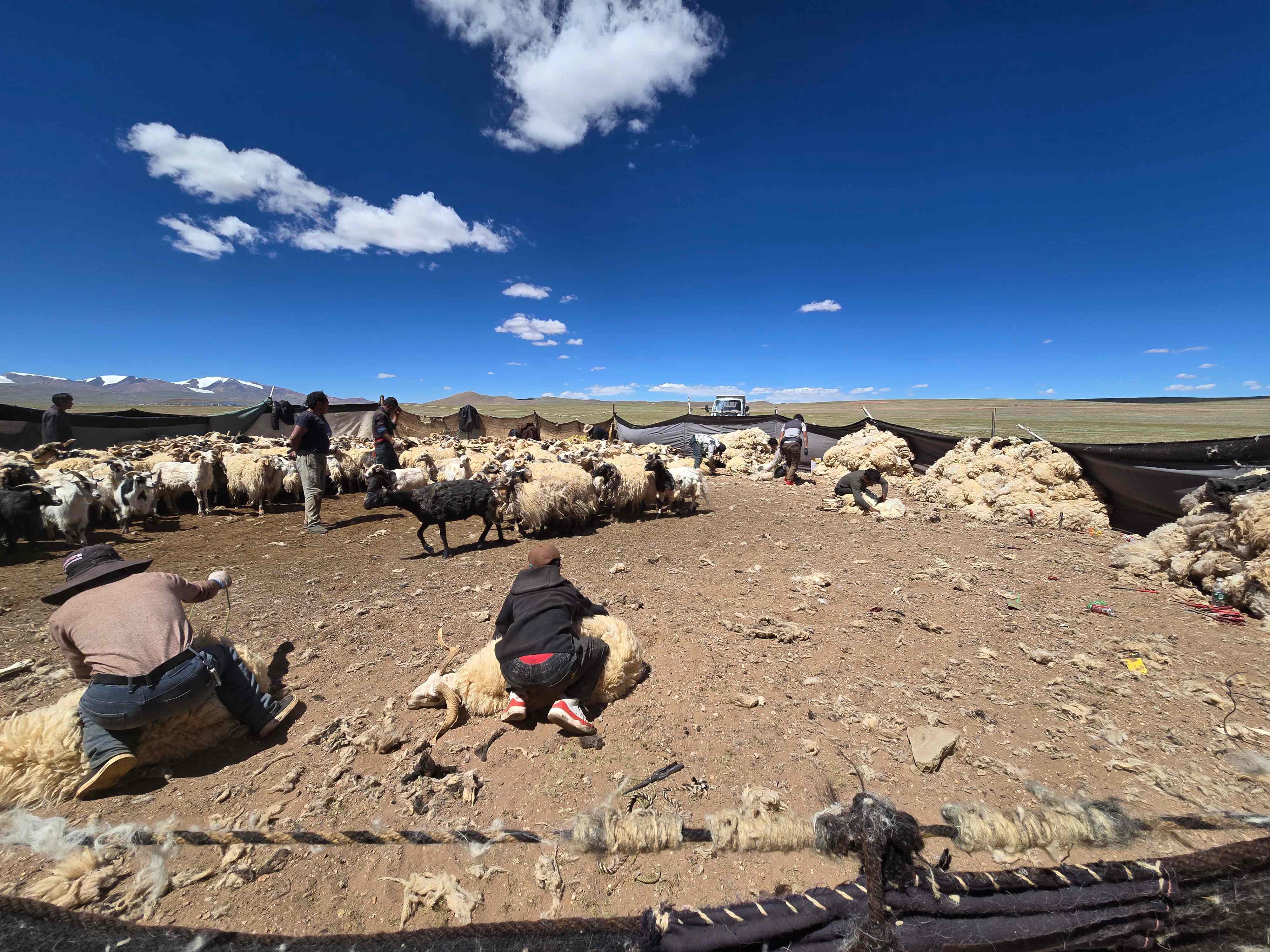对转基因安全性并没有“科学共识”
来源: 欧洲环境科学 发布时间:2015-03-04 阅读:2565 次
食物主权按:一个由独立科研人员和学者组成的广泛群体,对最近转基因生物的安全性(GMOs) 已经获得共识的说法提出了挑战。在这一群体的联合声明中,所谓的’共识”仅是通过各种论坛错误延续的虚伪构建。尽管参考文献中存在着(在转基因生物安全性问题上)相互矛盾的证据,如后边所记录的那样,但是对转基因生物的安全性已经有共识的说法仍然广泛且经常不加鉴别地传播。几十年来,转基因生物的安全性一直是世界各地辩论的热门争议性话题。发表的文献结果相互冲突,部分原因是所采用的研究方法不一,可用程序的不足,以及对数据的分析和解释不同。
Abstract
摘要
A broad community of independent scientific researchers and scholars challenges recent claims of a consensus over the safety of genetically modified organisms (GMOs). In the following joint statement, the claimed consensus is shown to be an artificial construct that has been falsely perpetuated through diverse fora. Irrespective of contradictory evidence in the refereed literature, as documented below, the claim that there is now a consensus on the safety of GMOs continues to be widely and often uncritically aired. For decades, the safety of GMOs has been a hotly controversial topic that has been much debated around the world. Published results are contradictory, in part due to the range of different research methods employed, an inadequacy of available procedures, and differences in the analysis and interpretation of data.
一个由独立科研人员和学者组成的广泛群体,对最近转基因生物的安全性(GMOs) 已经获得共识的说法提出了挑战。在这一群体的联合声明中,所谓的’共识”仅是通过各种论坛错误延续的虚伪构建。尽管参考文献中存在着(在转基因生物安全性问题上)相互矛盾的证据,如后边所记录的那样,但是对转基因生物的安全性已经有共识的说法仍然广泛且经常不加鉴别地传播。几十年来,转基因生物的安全性一直是世界各地辩论的热门争议性话题。发表的文献结果相互冲突,部分原因是所采用的研究方法不一,可用程序的不足,以及对数据的分析和解释不同。
Such a lack of consensus on safety is also evidenced by the agreement of policymakers from over 160 countries - in the UN’s Cartagena Biosafety Protocol and the Guidelines of the Codex Alimentarius - to authorize careful case-by-case assessment of each GMO by national authorities to determine whether the particular construct satisfies the national criteria for ‘safe’. Rigorous assessment of GMO safety has been hampered by the lack of funding independent of proprietary interests. Research for the public good has been further constrained by property rights issues, and by denial of access to research material for researchers unwilling to sign contractual agreements with the developers, which confer unacceptable control over publication to the proprietary interests.
转基因安全性缺乏共识这一问题也可从160多个国家的政策制定者达成的一项协议看出。在联合国《卡塔赫纳生物安全性议定书》与《食品法典的指导方针》中, 授权每个国家政府当局逐个仔细评估每个转基因生物体,判断它们具体的构造是否满足国家谓之“安全”的标准。对转基因安全性的严格评估,一直为缺乏独立于利益支配的资金所阻;为公益进行研究进一步为转基因知识产权问题所限。某些研究人员不愿意与开发商签订合同协议,协议中开发商对研究者的发表结果施加难以接受的控制权,使其屈从于开发商的专有利益;不签订这样的合同协议,研究者就不能获得研究材料(开发商的转基因作物产品)——这种情况也使独立研究受到限制。
The joint statement developed and signed by over 300 independent researchers, and reproduced and published below, does not assert that GMOs are unsafe or safe. Rather, the statement concludes that the scarcity and contradictory nature of the scientific evidence published to date prevents conclusive claims of safety, or of lack of safety, of GMOs. Claims of consensus on the safety of GMOs are not supported by an objective analysis of the refereed literature.
300多位独立研究人员拟订签署的联合声明,如下公开列明,未断言转基因生物安全与否。相反,该声明总结道,迄今发表的科学证据稀缺且相互冲突,使我们难以得出转基因生物安全或缺乏安全的确切结论。并认为,经客观地分析参考文献,对转基因安全已有共识的说法,难以成立。
Background
背景
Over recent years, a number of scientific research articles have been published that report disturbing results from genetically modified organism (GMO) feeding experiments with different mammals (e.g. rats [1], pigs [2]). In addition to the usual fierce responses, these have elicited a concerted effort by genetically modified (GM) seed developers and some scientists, commentators, and journalists to construct claims that there is a ‘scientific consensus’ on GMO safety [3-5] and that the debate on this topic is ‘over’ [6].
近年来发表的一定数量的科学研究文章报告了由以转基因作物喂养不同哺乳动物(如,大鼠[1],猪[2])的实验得出的令人不安的结果。除了(对这些实验结果)惯常的激烈回应外,转基因生物种子研发商、某些科学家、评论者与记者们,一致努力构建如对于转基因安全性已经取得了“科学共识”和对于该问题的辩论已经“过去了”的说法[3-5]。
These claims led a broader independent community of scientists and researchers to come together as they felt compelled to develop a document that offered a balanced account of the current state of dissent in this field, based on published evidence in the scientific literature, for both the interested public and the wider science community. The statement that was developed was then opened up for endorsement from scientists around the world with relevant expertise and capacities to conclude on the current state of consensus/dissent and debate regarding the published evidence on the safety of GMOs.
这些说法使得广泛领域的独立科学家与研究者联合到一起,因为他们觉得有必要为了与之利益攸关的公众和更广泛的科学界,基于已发表的科学文献中的证据,制定一个能为该领域目前的异议状况提供平衡论述的文件。接着,他们将这份声明文件公开以寻求世界各地具有相关专业知识和能力的科学家的支持,希望对当前共识/分歧的状态有一个推断,并就已发表的有关转基因生物安全性的证据辩论。
This statement clearly demonstrates that the claimed consensus on GMO safety does not exist outside of the above depicted internal circle of stakeholders. The health, environment, and agriculture authorities of most nations recognize publicly that no blanket statement about the safety of all GMOs is possible and that they must be assessed on a ‘case-by-case’ basis. Moreover, the claim that it does exist - which continues to be pushed in the above listed circles - is misleading and misrepresents or outright ignores the currently available scientific evidence and the broad diversity of scientific opinions among scientists on this issue. The claim further encourages a climate of complacency that could lead to a lack of regulatory and scientific rigour and appropriate caution, potentially endangering the health of humans, animals, and the environment.
声明清楚表明,对转基因生物安全性所宣称的共识,在上述利益相关者的内部圈子外根本不存在。大多数国家的卫生、环境和农业部门公开承认,对所有转基因生物的安全性不可能做出一揽子声明,而必须一个一个做“个案评估”。此外,这样的共识存在的说法 -- 在上述圈子内继续推动着的 --误导扭曲或完全忽略了就此问题现有的科学证据以及科学家之间广泛多样性的科学观点。这种(存在“共识”)的说法,更会鼓励自满的氛围,导致规范性、科学严谨性和适当谨慎的欠缺,从而潜在危害人类、动物与环境健康。
Science and society do not proceed on the basis of a constructed consensus, as current knowledge is always open to well-founded challenge and disagreement. We endorse the need for further independent scientific inquiry and informed public discussion on GM product safety.
科学与社会不能在一个被构建的共识的基础上前进,因为当前的知识随时面对有根据的挑战和异议。我们认为对转基因产品安全性进一步的独立科学质询与知情公众讨论是必要的。
Some of our objections to the claim of a scientific consensus are listed in the following discussion. The original version endorsed by 300 scientists worldwide can be found at the website of the European Network of Scientists for Social and Environmental Responsibility [7].
下面列出了我们反对科学共识这一说法的理由。由世界范围300位科学家支持的联合声明的原版,可以在欧洲社会与环境责任科学家网络上看到。[7]
Discussion
讨论
(1)There is no consensus on GM food safety
(1)对转基因食品安全性没有共识
Regarding the safety of GM crops and foods for human and animal health, a comprehensive review of animal feeding studies of GM crops found ‘An equilibrium in the number [of] research groups suggesting, on the basis of their studies, that a number of varieties of GM products (mainly maize and soybeans) are as safe and nutritious as the respective conventional non-GM plant, and those raising still serious concerns’. The review also found that most studies concluding that GM foods were as safe and nutritious as those obtained by conventional breeding were ‘performed by biotechnology companies or associates, which are also responsible [for] commercializing these GM plants’ [8].
在转基因作物与转基因食品对人体健康和动物健康的安全性问题方面,一篇转基因作物的动物饲喂研究的综述性论文发现,“认为许多转基因产品(主要是玉米和大豆)与其对应的传统非转基因作物的安全性和营养性是一样的研究组数量,同认为仍需要对转基因产品安全性表示严重关注的研究组数量一样多”。此外,这篇论文还发现,大多数得出转基因食品与传统育种获得的食品一样安全并具有一样营养性结论的研究,都是“由生物技术公司及其相关人士所做,而正是他们负责这些转基因作物的商业化推广”。[8]
A separate review of animal feeding studies that is often cited as showing that GM foods are safe included studies that found significant differences in the GM-fed animals. While the review authors dismissed these findings as not biologically significant [9], the interpretation of these differences is the subject of continuing scientific debate [8,10-12] and no consensus exists on the topic.
另外一篇常被引用以论证转基因食物是安全的有关动物饲喂研究的学术评述,也包括了吃转基因作物的动物中产生了显著差异的研究。尽管此综述的作者们,将这些发现看作是“生物学上不显著”[9]而加以排除,但是对这些差异的解释,一直是科学界持续争论在转基因的安全性上有没有取得共识的主题。
Rigorous studies investigating the safety of GM crops and foods would normally involve, inter alia, animal feeding studies in which one group of animals is fed GM food and another group is fed an equivalent non-GM diet. Independent studies of this type are rare, but when such studies have been performed, some have revealed toxic effects or signs of toxicity in the GM-fed animals [2,8,11-13]. The concerns raised by these studies have not been followed up by targeted research that could confirm or refute the initial findings.
调查转基因作物和食品安全性的严谨性研究涉及到的动物饲喂研究,正常情况下,在其他事物之外,这些研究中,一组实验动物吃转基因饲料,另一组吃对应的非转基因饲料。虽然这类独立性研究目前还很少,但是在已开展的这类研究中,就有一些研究发现在吃转基因饲料的实验动物中存在毒性效应或毒性症状。 [2、8、11-13] 针对这些研究引发的担心,没有进行可以确认或反驳这些初步结果的针对性的后续研究。
The lack of scientific consensus on the safety of GM foods and crops is underlined by the recent research calls of the European Union and the French government to investigate the long-term health impacts of GM food consumption in the light of uncertainties raised by animal feeding studies [14,15]. These official calls imply recognition of the inadequacy of the relevant existing scientific research protocols. They call into question the claim that existing research can be deemed conclusive and the scientific debate on biosafety closed.
动物饲喂研究引起的不确定性问题,导致欧盟和法国政府最近号召开展转基因食品消费对健康长期影响的科学研究,凸显了对转基因作物和食品安全性科学共识的缺乏[14、15]。这些官方号召表明对目前相关科学研究方法的不充分性这一问题的承认。他们使 “目前有关转基因生物的科学研究已有结论以及有关生物安全性的科学争论已经结束了”这样一个论断陷入质疑。
(2)There are no epidemiological studies investigating potential effects of GM food consumption on human health
(2)有关转基因食品对人体健康的潜在影响,目前还没有开展过流行病学研究
It is often claimed that ‘trillions of GM meals’ have been eaten in the US with no ill effects. However, no epidemiological studies in human populations have been carried out to establish whether there are any health effects associated with GM food consumption. As GM foods and other products are not monitored or labelled after release in North America, a major producer and consumer of GM crops, it is scientifically impossible to trace, let alone study, patterns of consumption and their impacts. Therefore, claims that GM foods are safe for human health based on the experience of North American populations have no scientific basis.
一些人常常声称美国人吃了数以万亿份转基因餐,没有任何人发生不良反应。然而,时至今日还没有在人口中开展过转基因食品消费是否对健康产生影响的流行病学研究。北美是转基因作物的主要生产者和消费者,转基因食品和其他产品在那里上市销售不需要标识,对其后果也没有任何监控,所以在科学上不可能跟踪转基因食品的消费模式及其影响,更不用说研究了。因此,基于北美人口的经验,就声称转基因食品对人体健康是安全的,毫无科学基础。
(3)Claims that scientific and governmental bodies endorse GMO safety are exaggerated or inaccurate
(3) 声称科学团体和政府机构认同转基因生物的安全性,是夸大其词或者说不准确的
Claims that there is a consensus among scientific and governmental bodies that GM foods are safe, or that they are no more risky than non-GM foods [16,17], are false. For instance, an expert panel of the Royal Society of Canada issued a report that was highly critical of the regulatory system for GM foods and crops in that country. The report declared that it is ‘scientifically unjustifiable’ to presume that GM foods are safe without rigorous scientific testing and that the ‘default prediction’ for every GM food should be that the introduction of a new gene will cause ‘unanticipated changes’ in the expression of other genes, the pattern of proteins produced, and/or metabolic activities. Possible outcomes of these changes identified in the report included the presence of new or unexpected allergens [18].
声称在科学界和政府界已达成共识——转基因食品是安全的,或者它们不比非转基因食品风险高[16、17],这是错误的。例如,加拿大皇家学会(即:加拿大科学院)的一个专家小组就发表了一份报告,对加拿大有关转基因食品和作物的监管体制提出了强烈的批评。该报告声明:没有进行严格的科学测试就假定转基因食品是安全的,这在“科学上没有道理”;对于引入新基因的任何转基因食品应该采取这样的默认预测:引入新的基因会对其他基因的表达、蛋白质产生的模式和/或相关代谢活动产生“未曾预料到变化”。这个报告中指出,这些变化可能产生的后果也包括新的或者未曾预料到的过敏原的出现[18]。
A report by the British Medical Association concluded that with regard to the long-term effects of GM foods on human health and the environment, ‘many unanswered questions remain’ and that ‘safety concerns cannot, as yet, be dismissed completely on the basis of information currently available’. The report called for more research, especially on potential impacts on human health and the environment [19].
英国医学协会发布的一份报告得出结论认为,有关转基因食品对人体和环境的长期影响,仍存有“许多没有回答的问题”,而且,“基于目前现有的信息,对转基因食品安全性的担心现在还不能完全排除”。英国医学协会的这份报告号召开展更多的研究,特别是针对转基因食品对人体健康和环境的潜在性影响[19]。
Moreover, the positions taken by other organizations have frequently been highly qualified, acknowledging data gaps and potential risks, as well as potential benefits, of GM technology. For example, a statement by the American Medical Association’s Council on Science and Public Health acknowledged ‘a small potential for adverse events … due mainly to horizontal gene transfer, allergenicity, and toxicity’ and recommended that the current voluntary notification procedure practiced in the US prior to market release of GM crops be made mandatory [20]. It should be noted that even a ‘small potential for adverse events’ may turn out to be significant, given the widespread exposure of human and animal populations to GM crops.
然而,其他一些组织持有的立场也常常很有质量,承认转基因科技存在数据空白和潜在风险,也有潜在效益。例如,美国医学协会科学与公共卫生委员会的声明承认,“主要由于基因的水平转移,致敏性以及毒性等,较小可能造成不良事件”,同时建议将美国目前转基因食品上市前采取的“自愿性”通知程序改为“强制性的”[20]。人们应该注意到,由于人类和动物群广泛暴露于转基因作物,即使“较小可能的不良事件”也可能是非常严重的。
A statement by the board of directors of the American Association for the Advancement of Science (AAAS) affirming the safety of GM crops and opposing labelling [21] cannot be assumed to represent the view of AAAS members as a whole and was challenged in an open letter by a group of 21 scientists, including many long-standing members of the AAAS [22]. This episode underlined the lack of consensus among scientists about GMO safety.
美国科学促进协会理事会(AAAS)断言转基因作物是安全的,并且反对标识[21],不能当作是代表这个协会整体成员的观点,因为有21位科学家发表了一封公开信对这种观点提出了挑战,其中有许多是这个协会的常任成员。这事件表明科学家对转基因生物安全性缺乏共识。
(4)EU research project does not provide reliable evidence of GM food safety
(4)欧盟(针对转基因食品安全性)的研究项目并没有为转基因食品安全性提供可靠的证据
An EU research project [23] has been cited internationally as providing evidence for GM crop and food safety. However, the report based on this project, ‘A Decade of EU-Funded GMO Research’, presents no data that could provide such evidence from long-term feeding studies in animals.
在国际上,“欧盟资助转基因生物研究的十年”这一项目[23]一直以能为转基因作物与食品安全性提供证据而被引用。但是,基于此项目的报告没有给出能够为转基因作物与食品安全性提供证据的动物长期饲喂研究数据。
Indeed, the project was not designed to test the safety of any single GM food but to focus on ‘the development of safety assessment approaches’ [24]. Only five published animal feeding studies are referenced in the SAFOTEST section of the report, which is dedicated to GM food safety [25]. None of these studies tested a commercialized GM food; none tested the GM food for long-term effects beyond the subchronic period of 90 days; all found differences in the GM-fed animals, which in some cases were statistically significant; and none concluded on the safety of the GM food tested, let alone on the safety of GM foods in general. Therefore, the EU research project provides no evidence for sweeping claims about the safety of any single GM food or of GM crops in general.
实际上,这个项目的设计并非为测试任何单个转基因食品安全性,而关注于“风险评估方法的开发”[24]。这篇报告针对转基因食品安全性的SAFOTEST部分,仅引用了五篇公开发表的动物饲喂研究文献[25]。但是这些研究没有一项对商业化的转基因食品进行测试,也没有任何一项研究测试转基因食品亚慢性90天期限以上的长期效应;喂食转基因饲料的实验动物中都发现了差异,而且在某些情况中的这种差异统计学显著;所有研究对所测试转基因食品的安全性没得出任何结论,更不用说对转基因食品安全性的一般性结论。因此,这个欧盟项目既没有为任何单个转基因食品的安全性,更没有为一般转基因作物安全性提供证据。
(5)List of several hundred studies does not show GM food safety
(5) 数百项研究文献清单并没有表明转基因食品安全性
A frequently cited claim published on an Internet website that several hundred studies ‘document the general safety and nutritional wholesomeness of GM foods and feeds’ [26] is misleading. Examination of the studies listed reveals that many do not provide evidence of GM food safety and, in fact, some provide evidence of a lack of safety. For example:
一份在某网站发表,且被频繁引用的言论声称百项研究“文献记录了转基因食品和饲料的一般安全性以及营养健全性” [26] 。这种言论完全误导读者。通过对所列这些研究的审查,人们可以看出许多研究没有提供转基因食品安全性的证据,事实上,反倒有一些研究提供了转基因食品缺乏安全性的证据。例如:
Many of the studies are not toxicological animal feeding studies of the type that can provide useful information about health effects of GM food consumption. The list includes animal production studies that examine parameters of interest to the food and agriculture industry, such as milk yield and weight gain [27,28]; studies on environmental effects of GM crops; and analytical studies of the composition or genetic makeup of the crop.
这些研究中,有许多都不是毒理学动物饲喂研究;后者能够提供关于转基因食品食用安全的有效信息。清单列出的这些研究包括:用来检查针对食品和农业畜牧动物指标的动物生产研究,如牛奶产量和体重增加等[27、28],有关转基因作物环境影响的研究;以及转基因作物成份或遗传组成的分析性研究。
Among the animal feeding studies and reviews of such studies in the list, a substantial number found toxic effects and signs of toxicity in GM-fed animals compared with controls [29-34]. Concerns raised by these studies have not been satisfactorily addressed and the claim that the body of research shows a consensus over the safety of GM crops and foods is false and irresponsible.
清单中列出的这些动物饲喂研究以及对这些研究的综述中,相当大数量的研究发现,与对照相比,喂养转基因饲料的动物出现了毒性效应和毒性症状[29-34]。这些研究引起的关注点一直没有得到满意的处理,而且相当数量这些研究表明,声称对转基因作物和转基因食品取得了共识是错误的与不负责任的。
Many of the studies were conducted over short periods compared with the animal’s total lifespan and cannot detect long-term health effects [35,36].
与实验动物生命周期相比,许多这些研究是仅进行了短期,不能检测长期的健康影响[35、36]。
We conclude that these studies, taken as a whole, are misrepresented on the Internet website as they do not ‘document the general safety and nutritional wholesomeness of GM foods and feeds’. Rather, some of the studies give serious cause for concern and should be followed up by more detailed investigations over an extended period of time.
我们结论,这些研究,整体来讲,在互联网上被误导性宣传,因为它们并非“文献记录了转基因食品和饲料的一般安全性以及营养健全性”。与此相反,某些研究提出了应当担心的严重原因,并且应当跟随做更长期限的更为详尽的研究。
(6)There is no consensus on the environmental risks of GM crops
(6) 对转基因作物的环境安全性风险也没有共识
Environmental risks posed by GM crops include the effects of insecticidal Bt (a bacterial toxin from Bacillus thuringiensis engineered into crops) crops on non-target organisms and the effects of the herbicides used in tandem with herbicide-tolerant GM crops.
转基因作物产生的环境风险包括将重组苏云金杆菌转入作物内产生细菌毒素的转基因Bt杀虫作物的影响,对非靶标生物的各种影响以及与容忍除草剂转基因作物捆绑使用的除草剂的各种影响。
As with GM food safety, no scientific consensus exists regarding the environmental risks of GM crops.
同转基因食品安全性一样,对转基因作物的环境安全性至今也没达成科学共识。
A review of environmental risk assessment approaches for GM crops identified shortcomings in the procedures used and found ‘no consensus’ globally on the methodologies that should be applied, let alone on standardized testing procedures [37]. Some reviews of the published data on Bt crops have found that they can have adverse effects on non-target and beneficial organisms [38-41] - effects that are widely neglected in regulatory assessments and by some scientific commentators. Resistance to Bt toxins has emerged in target pests [42], and problems with secondary (non-target) pests have been noted, for example, in Bt cotton in China [43,44].
对转基因作物环境风险评估方法的综述性论文指出了风险评估程序方面存在的缺点,发现全球转基因作物环境风险评估所采用的方法学“没有共识”,更不用说标准化的测试程序[37]。一些针对转基因Bt作物有关研究的综述性文章发现,转基因Bt基因作物能对非靶标生物和有益生物产生不利影响[38-41] -- 这些不利影响在政府规定性评估中却被广泛忽略,同时也被某些科学评论者所忽略。靶标害虫出现了对Bt毒素的抗性[42],次生害虫(非靶标害虫)的有关问题也引起了关注,例如,中国的转基因Bt棉花[43、44]。
Herbicide-tolerant GM crops have proved equally controversial. Some reviews and individual studies have associated them with increased herbicide use [45,46], the rapid spread of herbicide-resistant weeds [47], and adverse health effects in human and animal populations exposed to Roundup, the herbicide used on the majority of GM crops [48-50].
容忍除草剂转基因作物同样存在争议性。一些综述性文章和个别研究论文指出,除草剂使用量上升[45、46]、抗除草剂杂草广泛传播[47]、暴露于大多数作物施用的草甘膦除草剂农达(Roundup)对人类和动物群健康的影响[48-50]。
As with GM food safety, disagreement among scientists on the environmental risks of GM crops may be correlated with funding sources. A peer-reviewed survey of the views of 62 life scientists on the environmental risks of GM crops found that funding and disciplinary training had a significant effect on attitudes. Scientists with industry funding and/or those trained in molecular biology were very likely to have a positive attitude to GM crops and to hold that they do not represent any unique risks, while publicly-funded scientists working independently of GM crop developer companies and/or those trained in ecology were more likely to hold a ‘moderately negative’ attitude to GM crop safety and to emphasize the uncertainty and ignorance involved. The review authors concluded ‘The strong effects of training and funding might justify certain institutional changes concerning how we organize science and how we make public decisions when new technologies are to be evaluated’ [51].
与转基因食品安全性一样,科学家关于转基因作物环境风险的不同意见可能与资助来源有关。一份经同行审查的对62位生物学家转基因作物环境风险观点的调查结果发现,资助来源和学科背景教育,对这些科学家的态度有显著的影响。获得企业资助的科学家和/或具有分子生物学背景的科学家,很可能对转基因作物持有积极的态度,并且认为转基因作物不存在任何独特的风险;相反,受公共资金资助的并且与转基因作物开发公司在工作上保持独立的科学家以及具有生态学背景的科学家,更可能对转基因作物安全性持‘中等程度负面态度’,他们还强调转基因作物风险相关的不确定性以及对这些风险的忽略。这篇文章的作者们作结论说,“专业背景和资助来源竟然能够产生如此强烈的影响说明对新技术进行评估时应当如何组织科学以及我们如何做出公共决策做某些变革的合理性。” [51]
(7)International agreements show widespread recognition of risks posed by GM foods and crops
(7) 多项国际协定都显示了转基因食品和作物的风险已受到广泛承认
The Cartagena Protocol on Biosafety was negotiated over many years and implemented in 2003. The Cartagena Protocol is an international agreement ratified by 166 governments worldwide that seeks to protect biological diversity from the risks posed by GM technology. It embodies the Precautionary Principle in that it allows signatory states to take precautionary measures to protect themselves against threats of damage from GM crops and foods, even in case of a lack of scientific certainty [52].
《卡塔赫纳生物安全议定书》经过多年谈判终在2003年获得执行。该议定书是一项国际协定,目前已有世界各地166个政府批准加入,其目标是保护生物多样性不受转基因技术的风险。它体现了“预先防范原则”,允许缔约方采取预先防范措施保护本国应对转基因作物和转基因食品损害的威胁,即使在缺乏科学定论的情况下[52]。
Another international body, the UN’s Codex Alimentarius, worked with scientific experts for 7 years to develop international guidelines for the assessment of GM foods and crops because of concerns about the risks they pose. These guidelines were adopted by the Codex Alimentarius Commission, of which over 160 nations are members, including major GM crop producers such as the United States [53].
《联合国食品法典》是另一项国际协定,科学界专家经过7年的工作开发了一份国际转基因食品与作物评估指南。该份指南已在《联合国食品法典》委员会获得通过,该委员会由全世界160多个成员国家组成,其中包括主要的转基因作物生产国,如美国[53]。
The Cartagena Protocol and Codex share a precautionary approach to GM crops and foods, in that they agree that genetic engineering differs from conventional breeding and that safety assessments should be required before GM organisms are used in food or released into the environment.
《卡塔赫纳生物安全议定书》和《联合国食品法典》对转基因作物和转基因食品都采用预先防范方法,因为这两部国际协定都一致认为,基因工程与传统育种不同,在食品中使用转基因生物或向环境中释放转基因生物前应进行安全性评估。
These agreements would never have been negotiated, and the implementation processes elaborating how such safety assessments should be conducted would not currently be happening, without widespread international recognition of the risks posed by GM crops and foods and the unresolved state of existing scientific understanding. Concerns about risks are well founded, as has been demonstrated by studies on some GM crops and foods that have shown adverse effects on animal health and non-target organisms, indicated above. Many of these studies have, in fact, fed into the negotiation and/or implementation processes of the Cartagena Protocol and the Codex. We support the application of the Precautionary Principle with regard to the release and transboundary movement of GM crops and foods.
如果国际社会不是广泛承认转基因作物和转基因食品存在风险的话,以及未广泛认识到目前科学理解仍存在未决状态的话,就不能就这两个国际协定进行谈判,也不会有如何开展转基因作物和转基因食品安全性评估的执行过程。 对转基因作物和转基因食品存在风险的担心有充分根据,上述有关转基因作物和转基因食品对动物健康和非靶标生物产生不利影响的一些研究就是很好的说明。事实上,许多这样的研究已经反映到这两个国际协定的谈判和/或执行过程之中。对于转基因作物和转基因食品的释放和越境转移活动,我们支持采用预先防范原则。
Conclusions
结 论
In the scope of this document, we can only highlight a few examples to illustrate that the totality of scientific research outcomes in the field of GM crop safety is nuanced; complex; often contradictory or inconclusive; confounded by researchers’ choices, assumptions, and funding sources; and, in general, has raised more questions than it has currently answered.
在这份声明有限篇幅内,我们只强调了少数一些例子,其目的是为了说明在转基因作物安全领域,从整体上来看,科学研究的结果存在微妙性和复杂性,并且常常相互矛盾或者是不确定的;其结果还受到研究者的选择、一些假定以及资助来源等的干扰;而且,这些科学研究实际上提出了比它们目前回答的问题更多的问题。
Whether to continue and expand the introduction of GM crops and foods into the human food and animal feed supply, and whether the identified risks are acceptable or not, are decisions that involve socioeconomic considerations beyond the scope of a narrow scientific debate and the currently unresolved biosafety research agendas. These decisions must therefore involve the broader society. They should, however, be supported by strong scientific evidence on the long-term safety of GM crops and foods for human and animal health and the environment, obtained in a manner that is honest, ethical, rigorous, independent, transparent, and sufficiently diversified to compensate for bias.
是否在人类食品和动物饲料领域继续和推广转基因作物和食品,以及对于那些已查明的风险是否接受,这些问题涉及到有关经济社会因素的决策,超出了狭窄领域科学争论以及目前没有解决的生物安全研究议程的范围。因此,这些决策必须涉及更广泛的社会,应该得到转基因作物和食品对人体健康、动物健康以及环境长期安全性科学证据的强烈支持。为了避免偏见,获得这些科学证据的方式必须是诚实的、符合伦理学的、严谨的、独立的、透明的以及充分多样化的。
Decisions on the future of our food and agriculture should not be based on misleading and misrepresentative claims by an internal circle of likeminded stakeholders that a ‘scientific consensus’ exists on GMO safety.
对于我们食品和农业未来的各种决策,不应该基于想法类同的利益相关者小圈子宣扬的“转基因生物安全性已有科学共识”这样一个误导性的、歪曲性的宣传。
This document was subsequently opened for endorsement by scientists from around the world in their personal (rather than institutional) capacities reflecting their personal views and based on their personal expertise. There is no suggestion that the views expressed in this statement represent the views or position of any institution or organization with which the individuals are affiliated.
这份联合声明文件最初公布时,曾经征求世界各地科学家基于他们个人专长的个人(而不是机构)的意见。这份联合声明中表达的看法并不代表这些个人就职的机构的立场或者看法。
Qualifying criteria for signing the statement were deliberately selected to include scientists, physicians, social scientists, academics, and specialists in legal aspects and risk assessment of GM crops and foods. Scientist and academic signatories were requested to have qualifications from accredited institutions at the level of PhD or equivalent. Legal experts were requested to have at least a JD or equivalent.
这个声明签署者的资格范围限定为科学家、医生、社会科学家、学者、以及转基因作物与转基因食品法律方面与风险评估方面专家。签名的科学家与学者限于具有认证机构授予的博士或者等同学位者。法律专家则要求至少具有“法学职业博士”(JD:Juris Doctor)学位。
By December 2013, more than 300 people who met the strict qualification requirements had signed the statement. The statement was widely taken up in the media and reported in numerous outlets and evidence provided therein continues to be cited widely. In a time when there is major pressure on the science community from corporate and political interests, it is of utmost importance that scientists working for the public interest take a stand against attempts to reduce and compromise the rigour of examination of new applications in favor of rapid commercialization of new and emerging technologies that are expected to generate profit and economic growth. The document continues to be open for signature on the website of the initiating scientific organization ENSSER (European Network of Scientists for Social and Environmental Responsibility) at www.ensser.org.
到2013年12月为止,满足严格资格要求的300多位人士签署了这个联合声明。这个联合声明很快在媒体与无数网站进行了转载,其中提供的证据继续得到广泛引用。在公司利益与政治利益对科学界施加了巨大压力的当代,为了公众利益,对产业界对预计将为他们产生利润和经济增长新的和新兴技术快速商品化的新应用力图减少与放松严格审查的努力,科学家必须持反对立场至关重要。
Competing interests
竞争性利益
The authors declare that they have no competing interests.
作者声明他们没有竞争性利益。
Source-Text Authors/原文作者:
Angelika Hilbeck1,2,* (angelika.hilbeck@ensser.org)
Rosa Binimelis1,3 (rosa.binimelis@genok.no)
Nicolas Defarge1,4,5 (nicolas.defarge@gmail.com)
Ricarda Steinbrecher1,6 (R.Steinbrecher@econexus.info)
András Székács1,7 (a.szekacs@cfri.hu)
Fern Wickson1,3 (fern.wickson@uit.no)
Michael Antoniou8 (michael.antoniou@kcl.ac.uk)
Philip L Bereano9 (pbereano@u.washington.edu)
Ethel Ann Clark10 (eaclark@uoguelph.ca)
Michael Hansen11 (hansmi@consumer.org)
Eva Novotny12 (en@en.eclipse.co.uk)
Jack Heinemann13 (jack.heinemann@canterbury.ac.nz)
Hartmut Meyer1 (hmeyer@ensser.org)
Vandana Shiva14 (vandana.shiva@gmail.com)
Brian Wynne15 (b.wynne@lancaster.ac.uk)
Affiliation/就职机构:
1. European Network of Scientists for Social and Environmental Responsibility (ENSSER Board/Secretariat), Marienstrasse 19/20, 10117 Berlin, Germany
2. Institute of Integrative Biology, Swiss Federal Institute of Technology Zurich, Universitätstrasse 16, 8092 Zurich, Switzerland
3. GenØk Centre for Biosafety, Forskningsparken, PB 6418, 9294 Tromsø, Norway
4. Comité de Recherche et d’Information Indépendantes sur le génie Génétique CRIIGEN, 40 rue Monceau, 75008 Paris, France
5. University of Caen, Institute of Biology IBFA and Network on Risks, Quality and Sustainable Environment MRSH, Esplanade de la Paix, 14032 Caen, France
6. EcoNexus, Oxford OX4 9BS, UK
7. Plant Protection Institute Department for Ecotoxicology and Environmental Analysis, Hungarian Academy of Sciences, Budapest, Hungary
8. Department of Medical and Molecular Genetics, Faculty of Life Sciences and Medicine, King’s College London, Guy’s Hospital, London SE1 9RT, UK
9. Technology and Public Policy, University of Washington, Seattle, Washington 98195, USA
10. Plant Agriculture, University of Guelph, K0K 3 K0 Warkworth, Ontario, Canada
11. Consumers Union, 101 Truman Avenue, Yonkers, NY 10703, USA
12. Clare Hall, University of Cambridge, Herschel Road, Cambridge CB3 9AL, UK
13. Centre for Integrated Research in Biosafety, School of Biological Sciences, University of Canterbury, Christchurch, New Zealand
14. Navdanya Hauz Khas, New Delhi 110016, India
15. Centre for the Study of Environmental Change, CSEC, Lancaster University, Lancaster, UK
* Corresponding author. European Network of Scientists for Social and Environmental Responsibility (ENSSER Board/Secretariat), Marienstrasse 19/20, 10117 Berlin, Germany
Authors’ information
作者信息
EAC is retired.
Authors’ contributions
作者的贡献
All authors contributed equally to the writing of the document. All authors read and approved the final manuscript.
所有作者对于撰写这个文件做出了同样的贡献。所有的作者都阅读了与批准了追后版本。
References
参考文献
Séralini GE, Clair E, Mesnage R, Gress S, Defarge N, Malatesta M, et al. Republished study: long-term toxicity of a Roundup herbicide and a Roundup-tolerant genetically modified maize. Environ Sci Eur. 2014;26(1):1.
Carman JA, Vlieger HR, Ver Steeg LJ, Sneller VE, Robinson GW, Clinch-Jones CA, et al. A long-term toxicology study on pigs fed a combined genetically modified (GM) soy and GM maize diet. J Org Syst. 2013;8(1):38–54.
Frewin G. (2013). The new “is GM food safe?” meme. Axis Mundi, 18 July. http://www.axismundionline.com/blog/the-new-is-gm-food-safe-meme/; Wikipedia (2013). Genetically modified food controversies. http://en.wikipedia.org/wiki/Genetically_modified_food_controversies
Lynas M: GMO pigs study – more junk science. Marklynas.org 2013, 12 June [http://www.marklynas.org/2013/06/gmo-pigs-study-more-junk-science/]
Kloor K: Greens on the run in debate over genetically modified food. Bloomberg 2013, 7 January [http://www.bloomberg.com/news/2013-01-07/green-activist-reverses-stance-on- genetically-modified-food.html]
White M: The scientific debate about GM foods is over: they’re safe. Pacific Standard Magazine 2013, 24 September [http://www.psmag.com/health/scientific-debate-gm-foods- theyre-safe-66711/]
European Scientists for Social and Environmental Responsibility [www.ensser.org]
Domingo JL, Bordonaba JG. A literature review on the safety assessment of genetically modified plants. Environ Int. 2011;37:734–42.
Snell C, Bernheim A, Bergé JB, Kuntz M, Pascal G, Paris A, et al. Assessment of the health impact of GM plant diets in long-term and multigenerational animal feeding trials: a literature review. Food Chem Toxicol. 2012;50(3–4):1134–48.
Séralini GE, Mesnage R, Clair E, Gress S, Spiroux de Vendômois J, Cellier D. Genetically modified crops safety assessments: present limits and possible improvements. Environ Sci Eur. 2011;23:10.
Dona A, Arvanitoyannis IS. Health risks of genetically modified foods. Crit Rev Food Sci Nutr. 2009;49(2):164–75.
Diels J, Cunha M, Manaia C, Sabugosa-Madeira B, Silva M. Association of financial or professional conflict of interest to research outcomes on health risks or nutritional assessment studies of genetically modified products. Food Policy. 2011;36:197–203.
Séralini GE, Mesnage R, Defarge N, Gress S, Hennequin D, Clair E, et al. Answers to critics: why there is a long term toxicity due to NK603 Roundup-tolerant genetically modified maize and to a Roundup herbicide. Food Chem Toxicol. 2013;53:461–8.
EU Food Policy: Commission and EFSA agree need for two-year GMO feeding studies. 17 December 2012
French Ministry of Ecology, Sustainable Development and Energy2013: Programme National de Recherche: Risques environnementaux et sanitaires liés aux OGM (Risk’OGM) 2013, 12 July [http://www.developpement- durable.gouv.fr/IMG/pdf/APR Risk_OGM_rel_pbch_pbj_rs2.pdf]
Wikipedia: Genetically modified food controversies. 2013 [http://en.wikipedia.org/wiki/Genetically_modified_food_controversies]
Masip G: Opinion: Don’t fear GM crops, Europe! The Scientist 2013, May 28 [ http://www.the-scientist.com/?articles.view/articleNo/35578/title/Opinion--Don-t-Fear-GM- Crops--Europe-/]
Royal Society of Canada: Elements of precaution: recommendations for the regulation of food biotechnology in Canada; An Expert Panel Report on the Future of Food Biotechnology. 2001, January [http://www.rsc.ca//files/publications/expert_panels/foodbiotechnology/GMreportEN.pdf]
British Medical Association Board of Science and Education: Genetically modified food and health: a second interim statement. 2004, March [http://bit.ly/19QAHSI]
American Medical Association House of Delegates: Labeling of bioengineered foods. Council on Science and Public Health Report 2, 2012 [http://www.ama- assn.org/resources/doc/csaph/a12-csaph2-bioengineeredfoods.pdf]
AAAS: Statement by the AAAS Board of Directors on labeling of genetically modified foods. 2012, 20 October. http://www.aaas.org/news/releases/2012/media/AAAS_GM_statement.pdf
Hunt P, Blumberg B, Bornehag CG, Collins TJ, DeFur PL, Gilbert SG, et al. Yes: food labels would let consumers make informed choices. Environmental Health News 2012 [http://www.environmentalhealthnews.org/ehs/news/2012/yes-labels-on-gm-foods]
European Commission: A decade of EU-funded GMO research (2001–2010). 2010 [http://ec.europa.eu/research/biosociety/pdf/a_decade_of_eu-funded_gmo_research.pdf]
European Commission: A decade of EU-funded GMO research (2001–2010). 2010, 128. [http://ec.europa.eu/research/biosociety/pdf/a_decade_of_eu-funded_gmo_research.pdf]
European Commission: A decade of EU-funded GMO research (2001–2010). 2010, 157. [http://ec.europa.eu/research/biosociety/pdf/a_decade_of_eu-funded_gmo_research.pdf]
Tribe D: 600+ published safety assessments. GMOPundit blog undated [http://gmopundit.blogspot.co.uk/p/450-published-safety-assessments.html]
Brouk M, Cvetkovic B, Rice DW, Smith BL, Hinds MA, Owens FN, et al. Performance of lactating dairy cows fed corn as whole plant silage and grain produced from a genetically modified event DAS-59122-7 compared to a nontransgenic, near isoline control. J Dairy Sci. 2011;94:1961–6.
Calsamiglia S, Hernandez B, Hartnell GF, Phipps R. Effects of corn silage derived from a genetically modified variety containing two transgenes on feed intake, milk production, and composition, and the absence of detectable transgenic deoxyribonucleic acid in milk in Holstein dairy cows. J Dairy Sci. 2007;90:4718–23.
de Vendômois JS, Roullier F, Cellier D, Séralini GE. A comparison of the effects of three GM corn varieties on mammalian health. Int J Biol Sci. 2010;5(7):706–26.
Ewen SWB, Pusztai A. Effect of diets containing genetically modified potatoes expressing Galanthus nivalis lectin on rat small intestine. Lancet. 1999;354:1353–4.
Fares NH, El-Sayed AK. Fine structural changes in the ileum of mice fed on delta- endotoxin-treated potatoes and transgenic potatoes. Nat Toxins. 1998;6:219–33.
Kilic A, Akay MT. A three generation study with genetically m
















